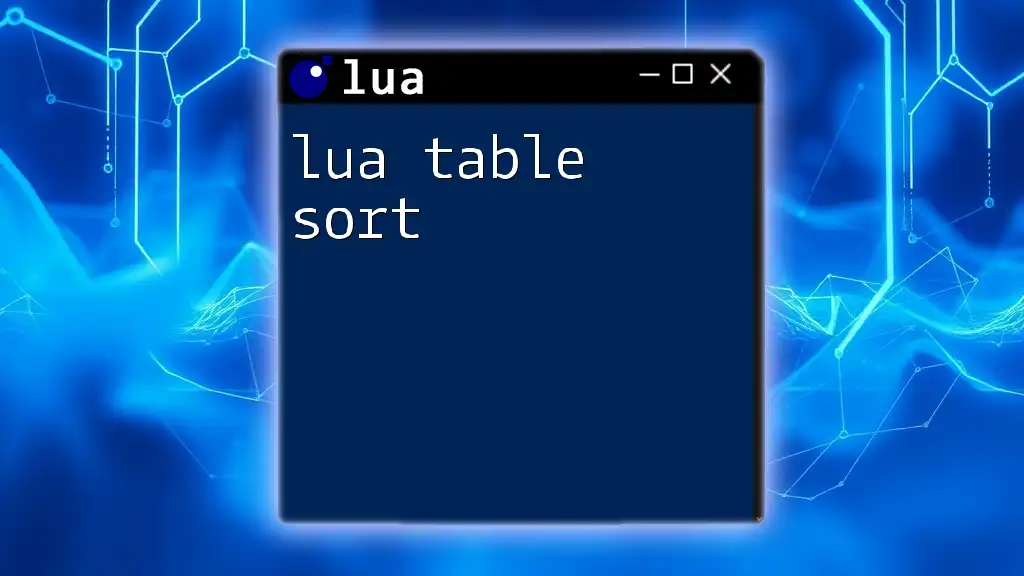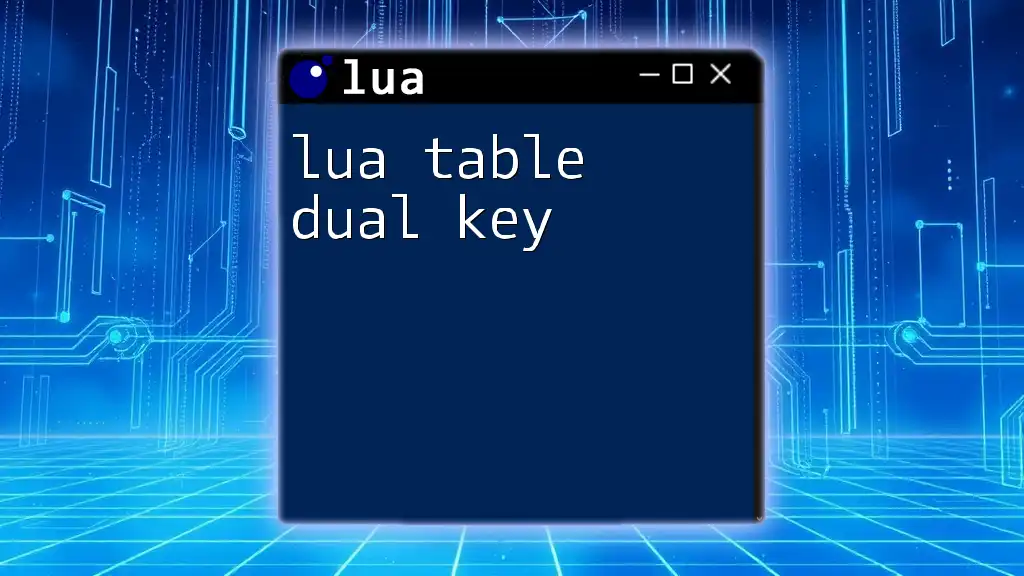The `table.insert` function in Lua allows you to efficiently add an element to the end of a table, effectively pushing the element onto it.
Here's a code snippet demonstrating how to use it:
local fruits = {"apple", "banana", "cherry"}
table.insert(fruits, "date") -- This pushes "date" onto the fruits table
print(table.concat(fruits, ", ")) -- Output: apple, banana, cherry, date
Understanding Lua Tables
Definition of Tables
In Lua, tables are the primary data structure and serve as a versatile solution to store collections of data. Unlike traditional arrays or dictionaries in other programming languages, tables can function as both. This dual nature allows developers to create complex data structures effortlessly by leveraging tables.
Creating Lua Tables
To define a table in Lua, you can use the following syntax:
myTable = {}
This creates an empty table named `myTable`. You can also initialize a table with values immediately:
myTable = {1, 2, 3}
Tables can be of two types:
- Array-style tables: These tables use sequential integer indices, similar to arrays in languages like Python or JavaScript.
- Key-value pair tables: These tables use strings or other types as keys, resembling objects or dictionaries.

What is `table.push`?
Functionality Overview
The `lua table.push` is an operation that allows you to add elements to the end of a table. This is particularly useful when collecting items dynamically or when the final order of insertion is important. It provides a straightforward approach that can be more aligned with natural programming flows than variant methods like `table.insert`.
Syntax of `table.push`
The general syntax for pushing an item onto a table is:
table.push(table, value)
This function takes two arguments: the target table and the value you want to insert.

How to Use `table.push`
Adding Single Elements
Using `table.push`, adding a single item to a table is straightforward.
local fruits = {}
table.push(fruits, "Apple")
print(fruits[1]) -- Output: Apple
In the example above, we create an empty table called `fruits`, then push the string `"Apple"` onto it. The `print` function confirms that the item was added correctly. After this operation, the table `fruits` will have its first index pointing to `"Apple"`.
Adding Multiple Elements
To add multiple elements to a table, you can use loops to streamline the process:
local colors = {}
for _, color in ipairs({"Red", "Green", "Blue"}) do
table.push(colors, color)
end
In this example, we initialize an empty table named `colors`. Using a loop, we iterate through an array of color strings and use `table.push` to append each color to the `colors` table. This method enhances code readability and maintains conciseness.
Using `table.push` with Different Data Types
Lua’s tables are flexible and can hold any type of data, including strings, numbers, and even other tables.
local mixedTable = {}
table.push(mixedTable, "Hello")
table.push(mixedTable, 42)
table.push(mixedTable, {key = "value"})
In this snippet, we declare a table `mixedTable` and push three different types of items into it: a string, a number, and another table.
It’s crucial to recognize that mixing data types in tables allows for the creation of flexible data structures suited to various programming tasks.

Best Practices for Using `table.push`
When to Use `table.push`
Understanding when to utilize `table.push` can improve code efficiency and clarity. Use `table.push` when:
- You need to maintain the insertion order of elements.
- You are dynamically collecting data, such as user inputs or responses from API calls.
For scenarios where you might need to insert an element at a specific index, consider using `table.insert` instead.
Performance Considerations
When working with larger tables, it’s vital to consider performance. Although `table.push` is typically efficient, continually pushing to the end of a massive table can have performance implications, especially if the table is being resized frequently. Always evaluate the memory constraints and keep track of the table's size to prevent performance bottlenecks.

Troubleshooting Common Issues with `table.push`
Handling Errors
Common mistakes when using `table.push` include attempting to push to a nil table. To avoid this, ensure that your table is properly initialized prior to attempting any push operations. For instance:
local myTable
table.push(myTable, "SomeValue") -- This will cause an error.
In this case, `myTable` is nil, leading to an error when trying to use `table.push`.
Debugging Techniques
When you encounter issues with table modifications, effective debugging techniques can save time. Lua’s built-in functions, like `print`, can help inspect the contents of a table after various operations.
print(table.concat(fruits, ", ")) -- Helps to visualize the contents of the fruits table.

Conclusion
Understanding and effectively utilizing `lua table.push` can enhance your programming experience in Lua. This powerful feature simplifies adding elements to tables and allows for flexibility with data types. As you practice and become acquainted with its syntax and application, you’ll discover even more efficient ways to manage collections in your programs.
Dive deeper and experiment with examples to harness the full potential of Lua tables and `table.push`. Happy coding!

Additional Resources
To further enhance your Lua programming skills, consider exploring the official Lua documentation, books focused on Lua programming, or engaging with Lua-focused online communities. Sharing your experiences and learning from others can provide additional insights into best practices and advanced techniques.

















